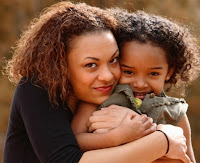1. Be a model each and every day. If
someone asks you to do something and you don’t want to, it’s okay to say “No.”
Let’s say you’re carrying your infant to day care to pick up your
Kindergartener. Another mother says, “Oh my gosh, she’s beautiful, can I hold
her for just a minute?” If you’re thinking “No,” you get to say, “No!” This is
consent in action and you’re modeling it for your older child.
2. Teach kids that they get to choose
with whom they show affection. This is a hard one for parents and grandparents,
but if your children and grandchildren don’t get to choose whether they feel
like hugging you and your family, how can you expect them to say no to someone
else? If grandma wants a kiss, she has to ask. And if the answer is “No,” then it’s
“No.” Of course, you can be kind about it and explain that you are teaching
your children about consent so they can protect themselves and have healthy
relationships.
3. Teach your children that no one is
allowed to touch their private parts (and they are not allowed to touch anyone
else’s private parts) unless you’re helping them wash, or it’s the doctor and
you, the parent, are present. This alone, however, is insufficient, because
when your child is at camp or involved in a sports program with a trainer,
nurse or doctor, you won’t be there. Therefore, it’s absolutely crucial to:
4. Invite every single substitute
caregiver onto your prevention team. This way, you are putting each coach,
teacher, doctor, tutor, relative, nanny, and so forth on notice that you’re
paying attention and your child has been taught body-safety rules. See Build Your Prevention Team - the Easy Way.
5. Have age-appropriate and explicit
conversations with your children about consent and what it looks like in
different situations. See How to Talk with Children About Consent.

No comments:
Post a Comment